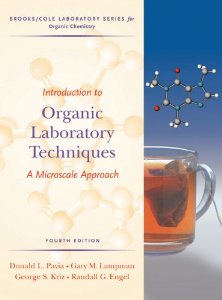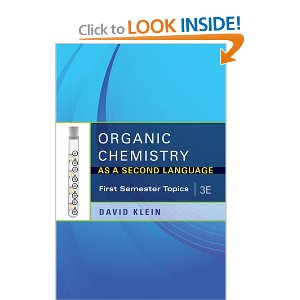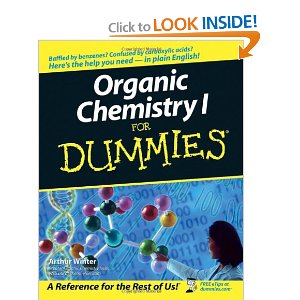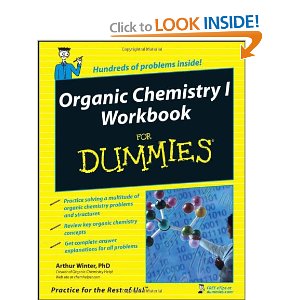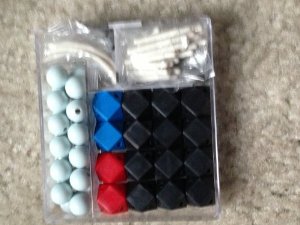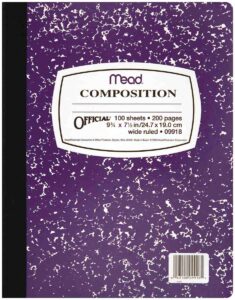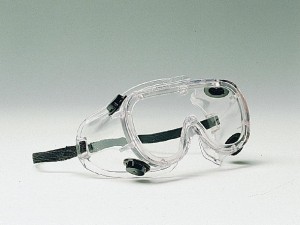There are a lot materials that you may not be used to purchasing for organic chem BUT if you do things the way we intend, you will use all of them, a lot. We have researched these options and this is our explanation of how the materials will be used so you can make the best decisions for yourself. Keep in mind that these materials are intended for an entire year of chemistry, that the course goes very quickly and there are not very many tutoring resources for you on campus, that you are spending a lot of time and money already and it would be worth getting other aids to ensure your success.
My summary of these recommendations is at the end.
Please read the following description of required materials BEFORE you purchase, AND DOUBLE CHECK WITH THE BOOKSTORE to make sure these are still current.
#1 Required Textbook:
For the entire series, we will use the textbook Organic Chemistry by David Klein, third edition. This textbook is provided through Inclusive Access. This is an economic choice if you only take one or two classes in the series, want to save money by not having to buy a separate solutions manual, and do not need to keep the book or mind using a digital resource.
If you intend to take the entire year of organic chemistry and prefer a hardcopy, then you might opt out of the Inclusive Access (within two weeks of the course start date) to get a partial refund. But keep in mind – the solutions manual is a separate (and often, expensive) text.
For the entire series, we will use the textbook Organic Chemistry by David Klein, third edition.
OPTIONAL:
Wiley also offers David Klein’s “Organic Chemistry as a Second Language” series (volume 1 and 2). These are smaller texts covering the fundamental “bare bones” ideas with some key practice problems. Students have highly recommended this as a supplement or even replacement of the textbook.
OPTIONAL:Solutions Guide
Keep in mind: The answers to problems in the textbook will not be in the textbook! There is a solutions manual for the book. It’s much more cost effective to do Inclusive Access or shop around for a solutions manual, which often costs as much as the textbook!
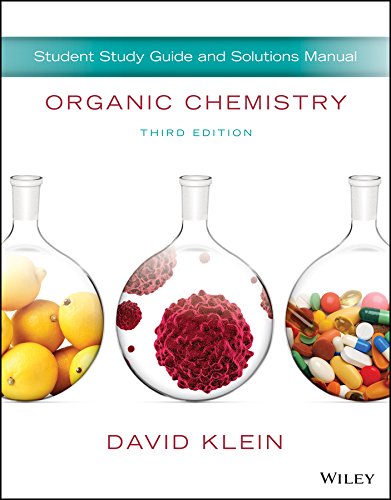
#2 Required Lab Text:
The lab textbook is called “Introduction to Organic Chemistry Techniques: A Microscale Approach”, fourth edition. This is going to be the most expensive item but can be resold later. Some students borrow or share this book. This book contains all the labs and techniques you will be using.
#3 OPTIONAL:
Supplemental workbooks… such as these. (Sorry for the word “dummies”)
#4 OPTIONAL:
HGS or similar molecular modeling kit for organic chem. There are some free apps and software available to visualize molecules in 3D in a digital format but there is nothing like holding a model kit in your hand and really seeing it in true 3D. This is more important for Chem 261 than the other quarters. You can get a small one like this for under $15.
#5 Required:
Goggles and lab notebook:
#6 OPTIONAL:
Depending on your instructor, you might also buy supplemental materials such as lecture notes packet (Prof. Mayer’s classes) or a packet of old exams (Prof. Goldston’s and/or Prof. Mitchell’s classes).
Last Updated February 21, 2022
